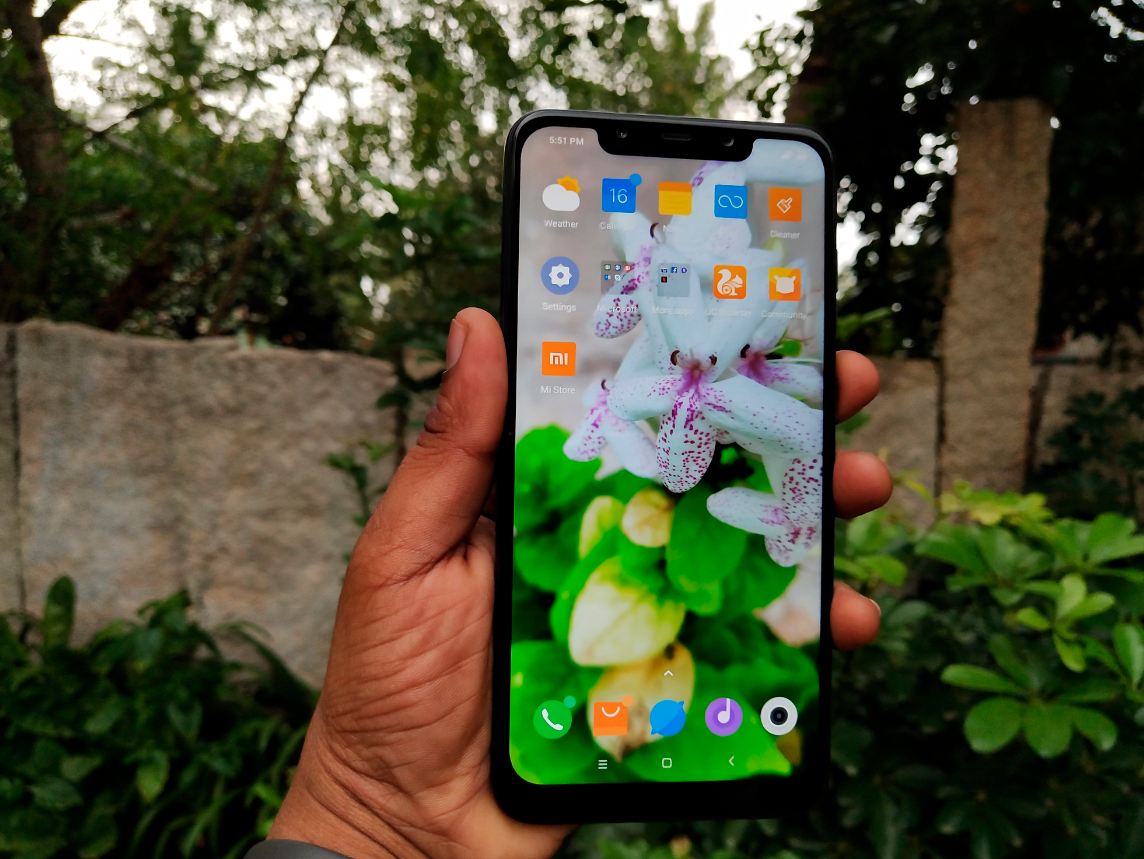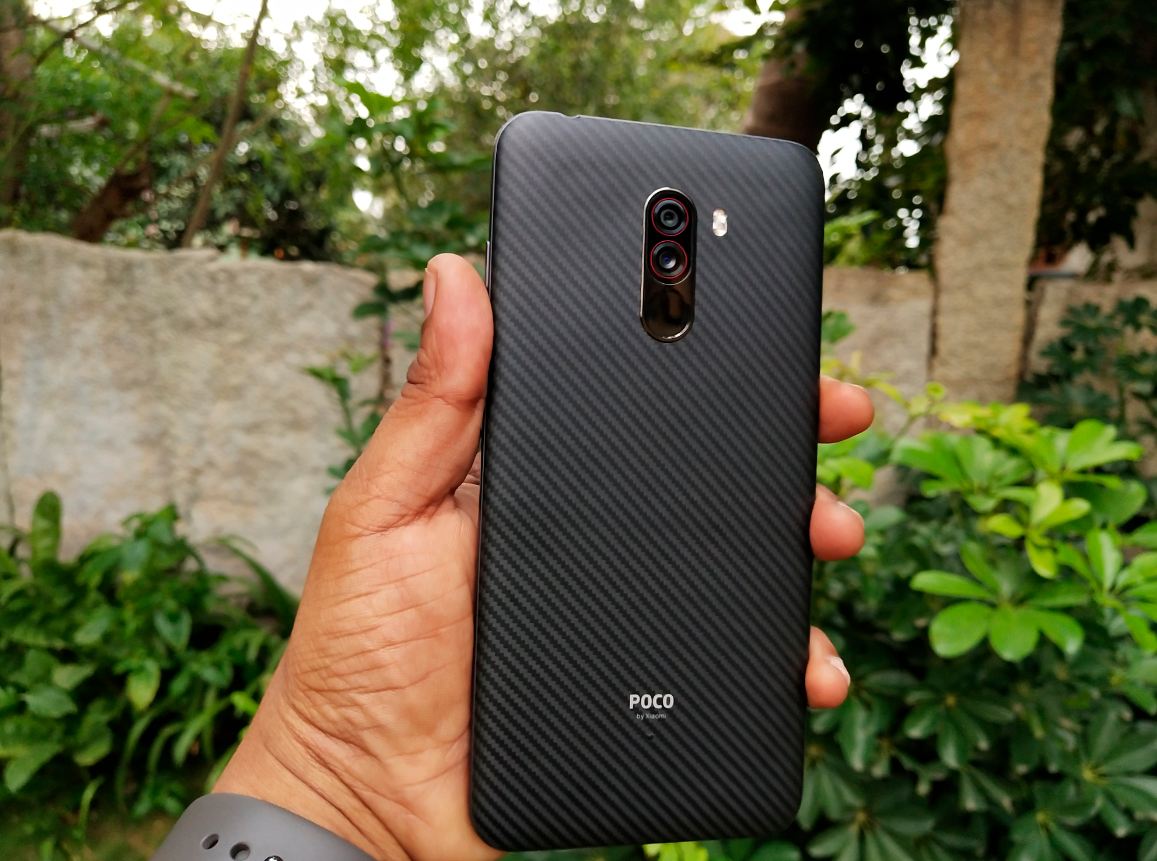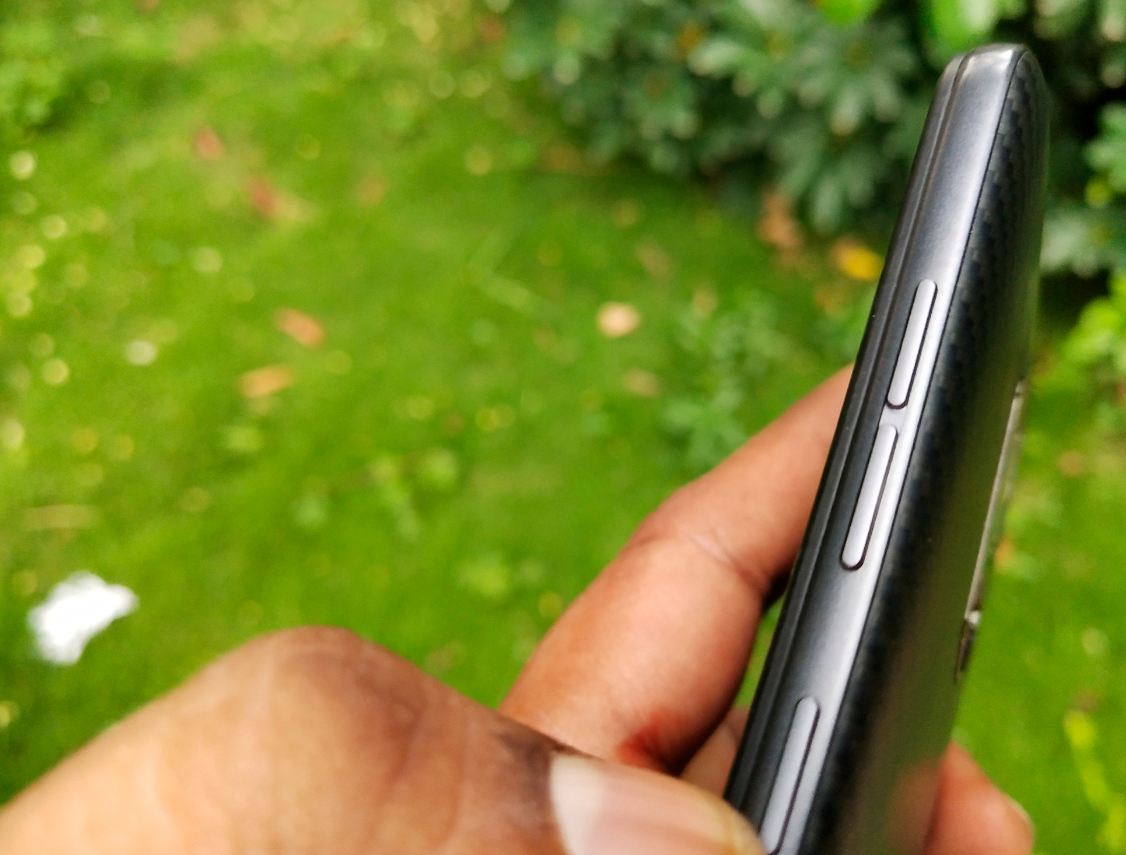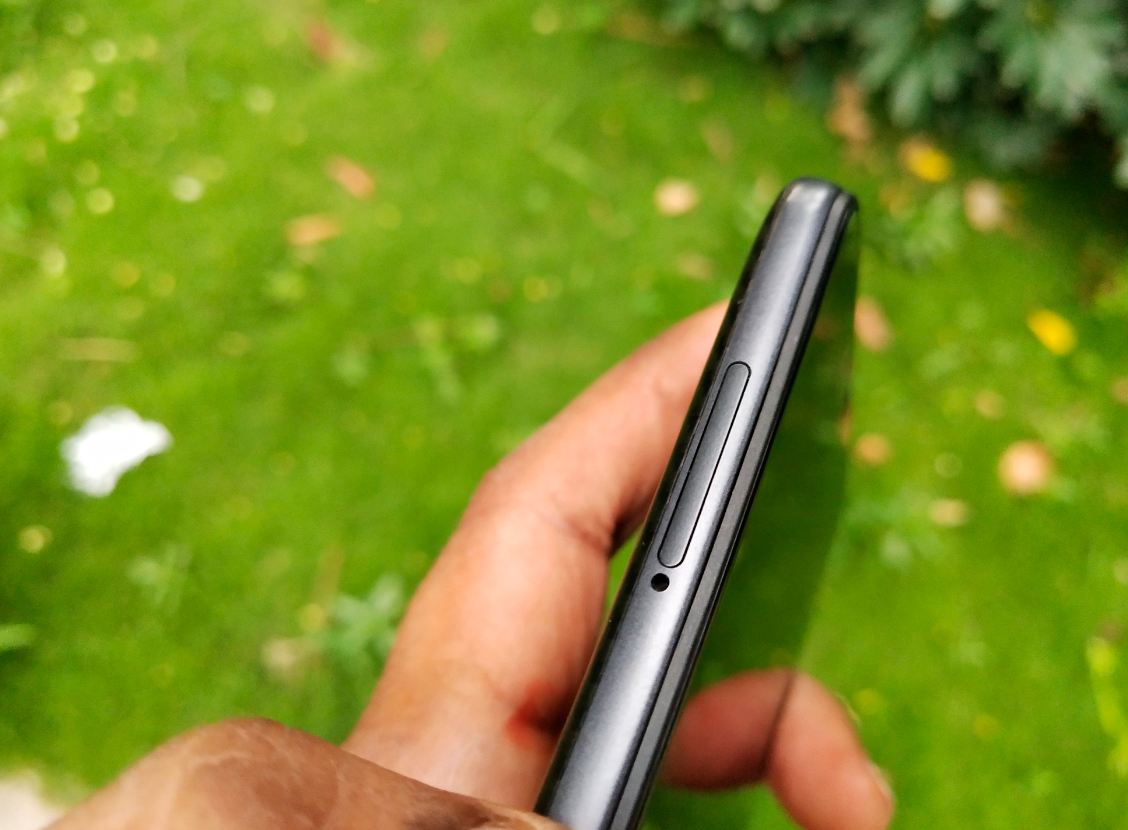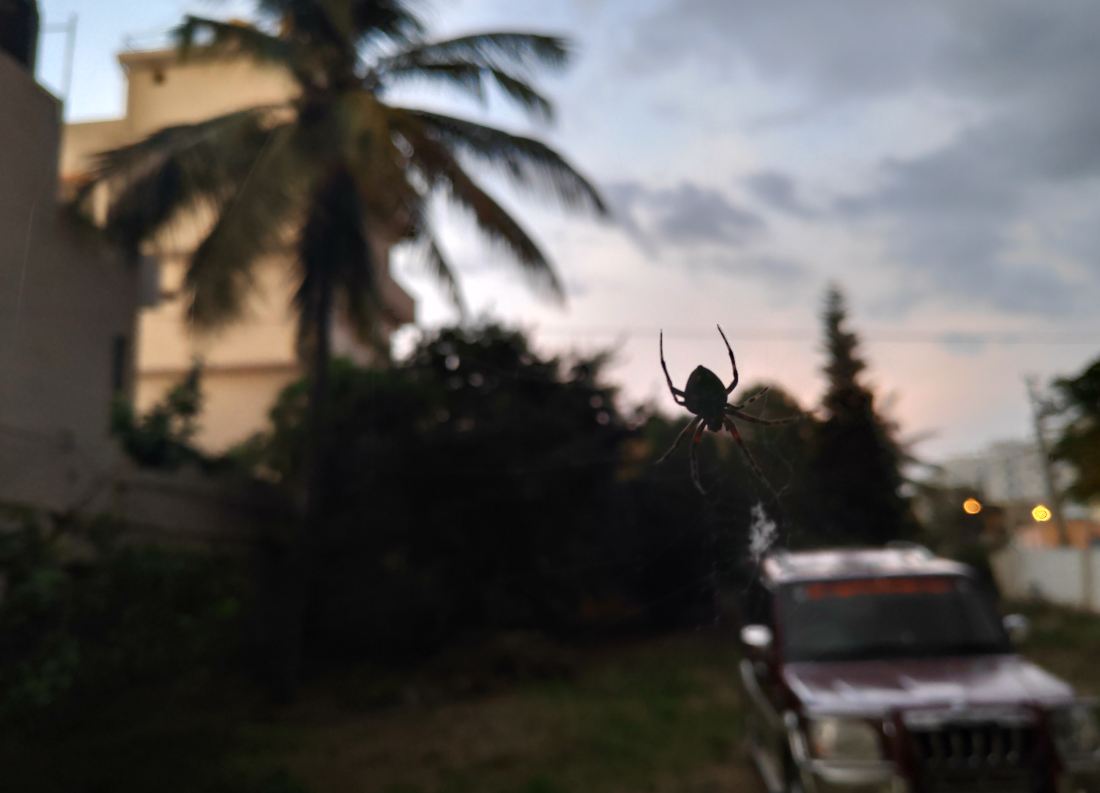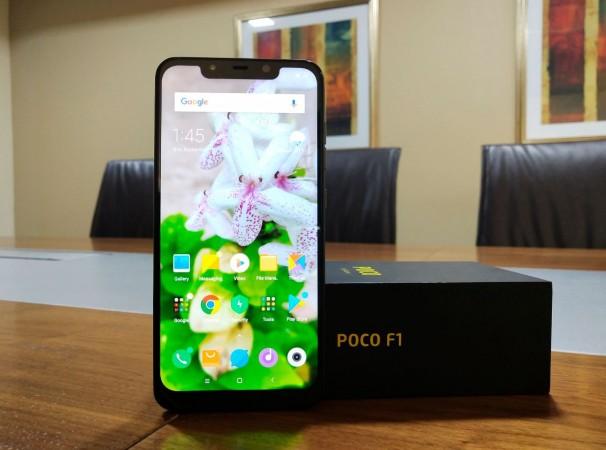
Last month, Xiaomi announced the new sub-brand Poco with the launch of Poco F1 aka Pocophone F1 (global) in India. The new Poco F1 comes beefed up with Snapdragon 845 octa-core processor and a huge 4,000 battery, among other top-notch features and costs less than half what rival brands charge their mobile with these specifications.
Its entry in the sub-continent is reminiscent of the Xiaomi Mi 3 debut in 2014 and the response from the public was overwhelming too. Poco minted more than Rs 200 crore in less than five minutes and it is expected to make more in following flash sales.
I have been using the Poco F1 for more than three weeks and so far, it has me impressed in almost all aspects. Here are my thoughts on this new phone.
Design, build quality and display:
My Poco F1 review unit is an Armoured Edition model and it's beautiful. It's not just me, my colleagues also loved the patterned texture on the back. Yeah, it's a fingerprint magnet, but we cannot take away the fact that top-end Poco F1 is visually appealing from the back.
It comes with a metallic frame around the edges offering good stability to the structure and it didn't take too long for me to know its strength, as I dropped it (from three feet height) on the first day of opening the device from the retail box.
It took quite a tumble with edges taking the initial hit and falling flat on the display. Have to say, I had covered it with silicone cover, which comes with the package. The bottom line is it survived without a scratch and has no issues with regard to the functioning of the device.

During this period, two controversies broke out in the media—one, it doesn't support HD content on Amazon Prime video, Netflix (& other streaming services) and second, screen bleeding issue. I will be addressing both concerns in this review.
First, the no HD support. I played videos on Amazon Prime and yes, the highest streaming and download quality is 0.46GB per hour. To be frank, it is not that a big a deal, as video quality was very much up to the mark.

As far as the screen bleeding is concerned, my review unit is perfectly fine. I went a step ahead by doing display testing. You can also do it by going to the Settings >> About Phone >> tap Kernel Version four times>> select Display. You will see the screen with every tap turn to green, red and blue colour. There you will be able to find whether there is paling of the screen near the edges.

For a company that sells thousands and millions of phones, there are bound to have a handful of defective models. No company can escape this. So, if you happen to have a defective model, there is no need to lose sleep on it as you can always return it to the seller and get a new one.
For those unaware, it flaunts a 6.18-inch full HD+ display with iPhone X-like notch on the top housing an advanced 20MP camera with IR sensor for face unlock capability. It can even work in the dark environment.
Performance:
The main aspect of the Poco F1 is its high endurance processor and oh boy, it delivers with fly colours. It houses Snapdragon 845 octa-core, most powerful and fastest Qualcomm chipset to date.
It is backed by Liquid Cool Technology (LCT). During the high endurance operation such as the playing graphics-intense gaming and 4K video recording, the processor gets worked up and generates heat and the LCT comes in to play to dissipate it.
Poco F1 delivers it consistently and I never faced any lag-ness while performing any tasks or heating during the video playback and the gaming never went beyond my comfort level.
I tried performance benchmarking apps on the Poco F1. It fared pretty well by scoring 2,64,946 on AnTutu. On 3D mark Sling Shot extreme, it scored 2793 and 2126 on OpenGL ES 3.1 and Vulkan respectively.
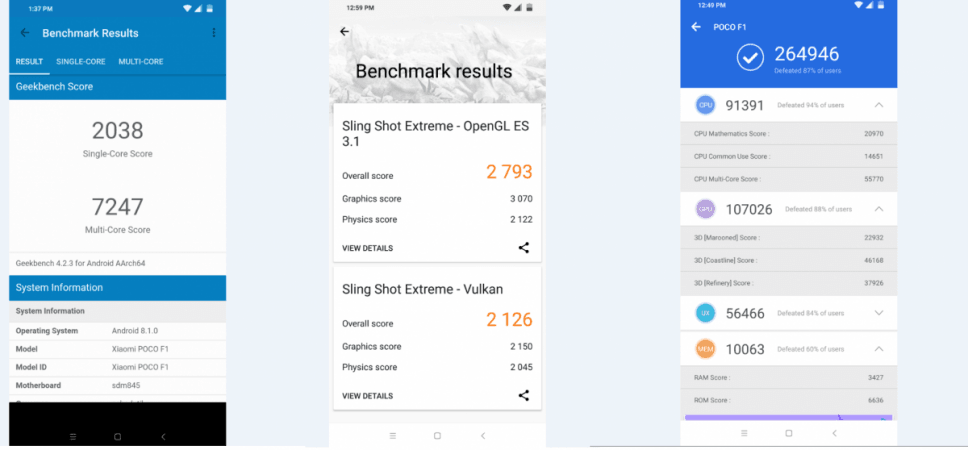
And on Geekbench, it scored 2038 and 7247 on single-core and multi-core tests, respectively.
As far as the user interface is concerned, it's very subjective. I prefer the pure Android experience, but Poco F1's custom MIUI 9 series is good. I had no trouble finding the customisation features in the settings be it for adjust brightness (it's in the pull-down drawer), check storage space and to find other options.
Have to say, MIUI is one of the best custom user interfaces in the market, as it never affects performance despite heavy customisation. It truly lived up the MIUI 9 moto-- Lightning Fast.
Going by recent reports, Poco F1 will soon get the new Android Pie update.
Face unlock:
Poco F1 comes with advanced front-camera with face recognition technology and is supported by IR laser sensor, which helps the device accurately detect owner's face even in pitch darkness and yes, it works just fine to my liking. It was able to identify me with and without my glasses. Even at night, I was able to unlock the phone with Face ID feature.
Camera:
Initially, I had some doubts over the camera of the Poco F1, as I thought the company might cut corners to make the phone's price come under Rs 21,000. Have to say, Poco proved me wrong.
Though Poco F1 lacks Optical Image Stabilisation (OIS), it was still able to capture some great photos in almost all light conditions and the Portrait mode blew my socks off. To put it in better perspective, the picture quality is almost as good as the more expensive OnePlus 6.
Thanks to Electronics Image Stabilisation (EIS), Poco F1 was consistent in taking good pictures even when my hands shake occasionally while taking long videos and capturing photos.
As far as the front camera is concerned, it takes impressive selfies and the portrait mode images are as good as the primary camera thanks to Artificial Intelligence (AI)-based camera app.
For those unaware, Poco F1 comes with feature-rich 12MP (Sony IMX363, F1.9, 1.4μm) + 5MP AI dual camera, Dual Pixel Autofocus, HDR, Multi-frame Noise Reduction, more than 200 AI scene detection, AI Beautify and AI portrait mode.
On the front, it features equally impressive 20MP sensor with 1.8μm pixel size, 4-in-1 Super Pixel, F2.0 aperture, HDR, AI scene detection, AI Beautify, AI portrait mode and Infrared illuminator + infrared camera for the Face Unlock feature.
Battery:
Poco F1 comes with a 4,000mAh battery. During the testing period, which included a session of gaming, social media app browsing, two 20-minutes TV shows on Amazon Prime Video, regular cricket score checking on Cricbuzz, reading Google news, occasional searches on Google, and other day-to-day telecommunication chores like email notifications, Poco F1 consistently delivered a full day battery life. If used more conservatively, it will easily last another half a day.

Final thoughts:
Having used the Poco F1 for more than three weeks, I am in awe of this phone. For those who have said, Poco has made some trade-offs to bring the device's cost under Rs 21,000, it's not true. For its price, it is worth every penny. It would have been a fairer argument if the company had charged us beyond Rs 35,000.
Even the looks, Poco F1, particularly the Armour Edition is gorgeous. Many of my colleagues were impressed with Kevlar cover of the device. I come to understand that consumers, at this age of easy access to the internet, do their due diligence to go beyond the exterior looks of the phone.
The generic models with polycarbonate shells are a bit drab compared to the Armour edition, but consumers can get custom skins for just Rs 299 from Mi store and make it more visually appealing.
I know for fact, the novelty factor of the new phone and looks, wears off in just a week or two and what matters most is the long-term use. With Qualcomm Snapdragon 845 octa-core, you are assured faster and efficient performance for at least a year and a half and by that time, you will be already planning a new phone.
If you ask me for a cost-effective premium phone, I recommend the Poco F1. It will not disappoint you.
Pros:
- Exceptional system configuration (Snapdragon 845 octa-core+ 6GB/8GB RAM+ 64GB/128GB/256GB)
- Long lasting battery life
- Decent camera for its price
- Aggressive price tag
Cons:
- Does not support HD content on Amazon Prime Video, Netflix and other streaming service, but it's not a big deal, as the 540p video is good enough on a small screen to watch without any strain to the eyes.


